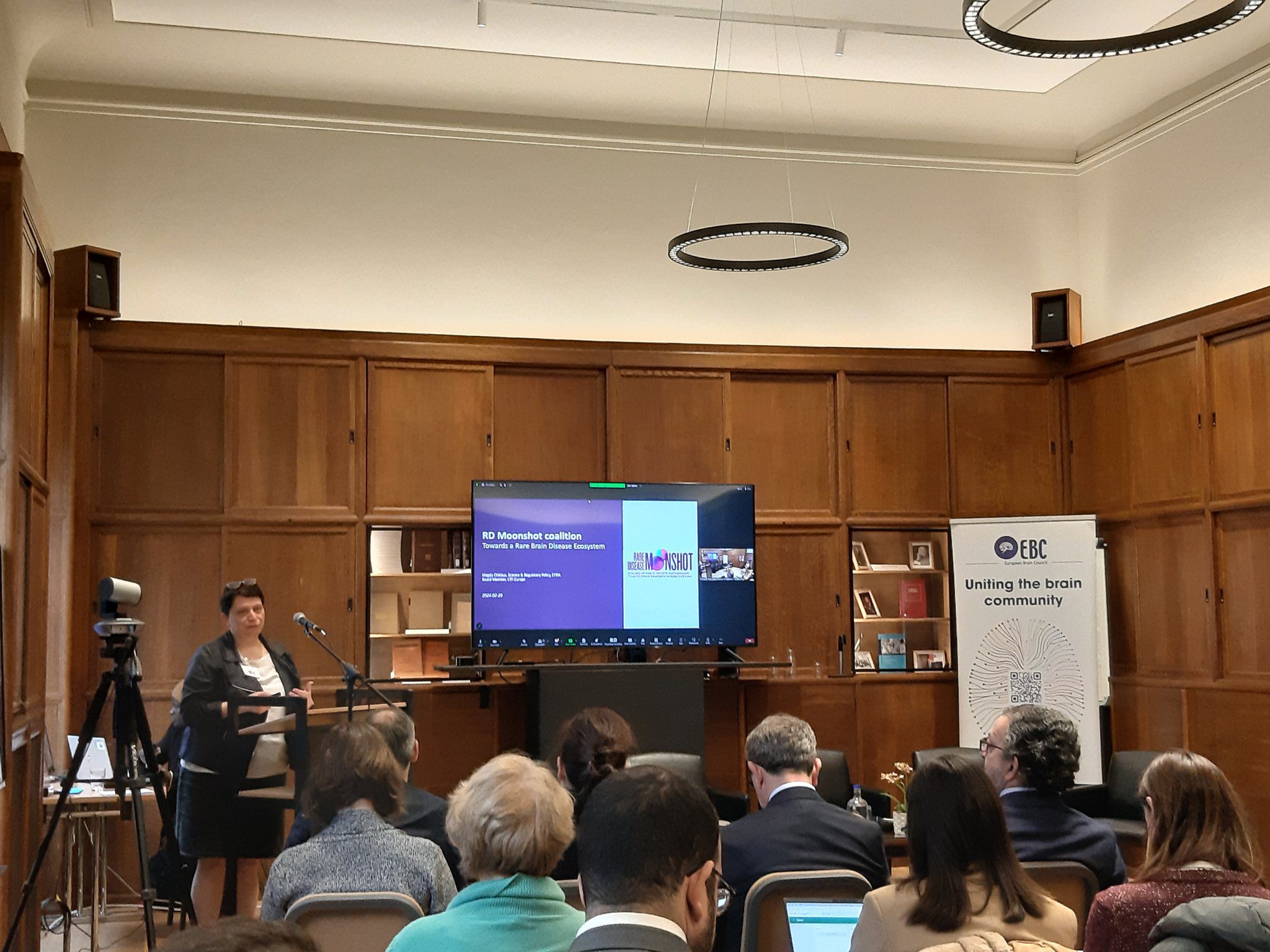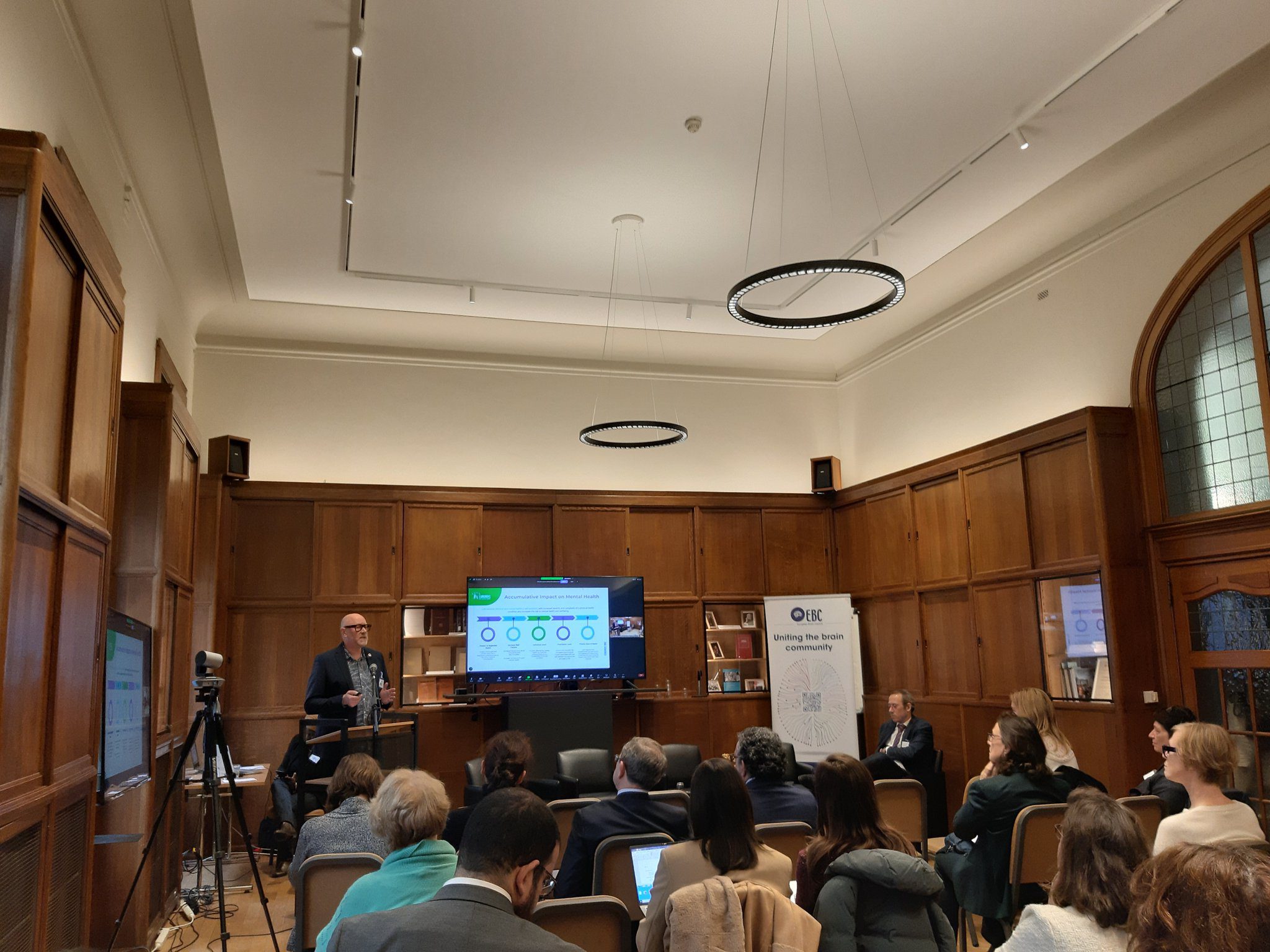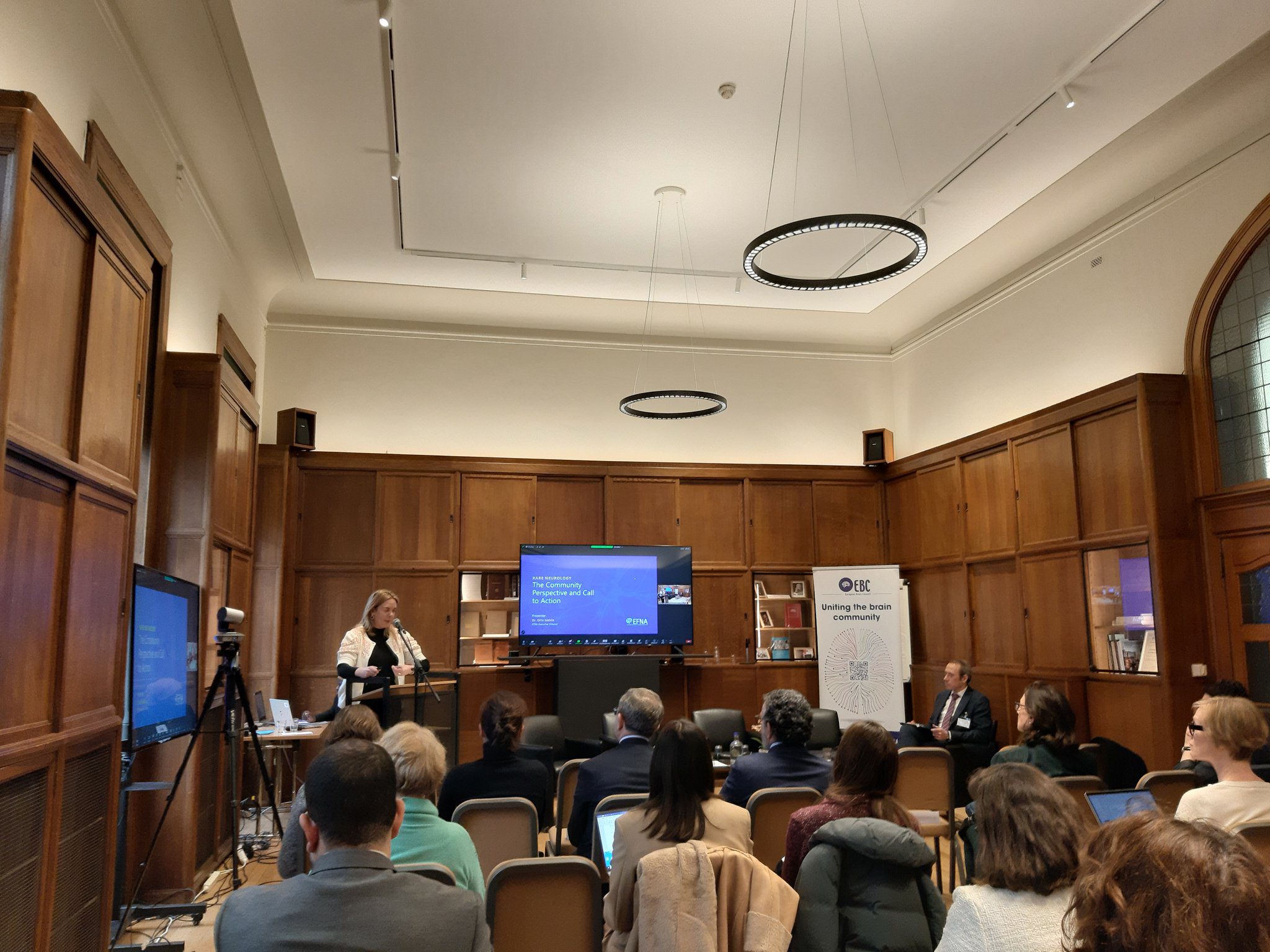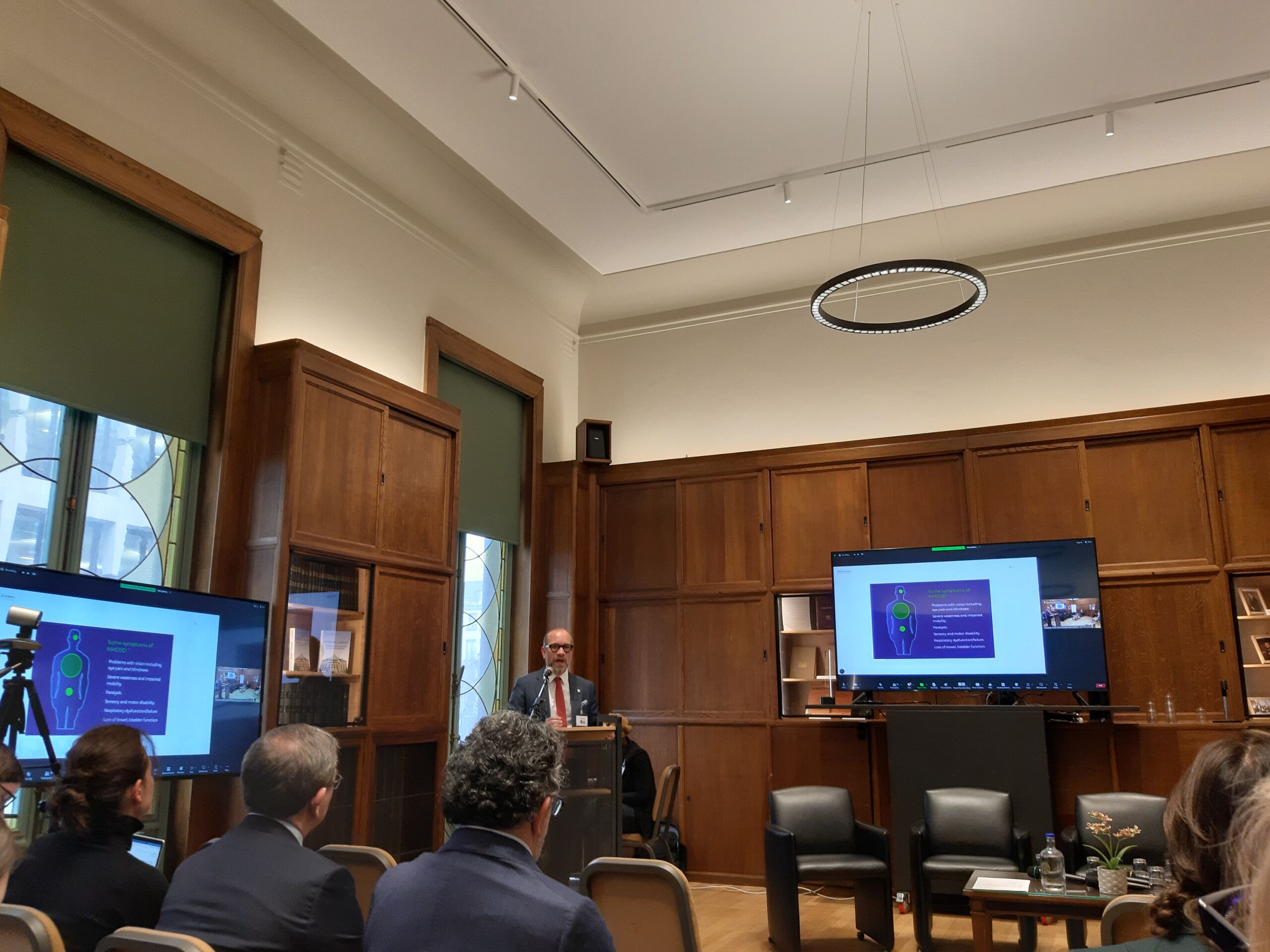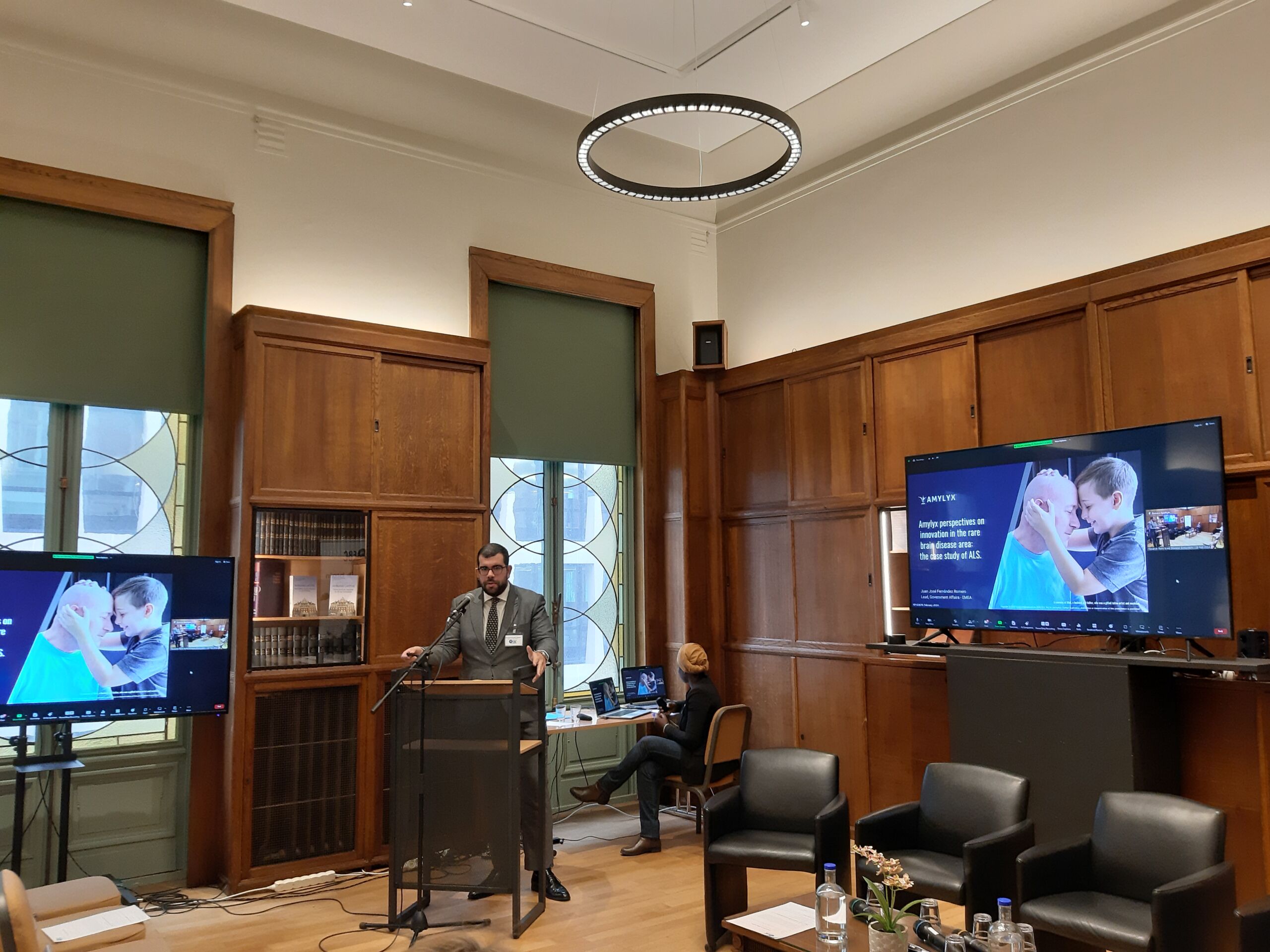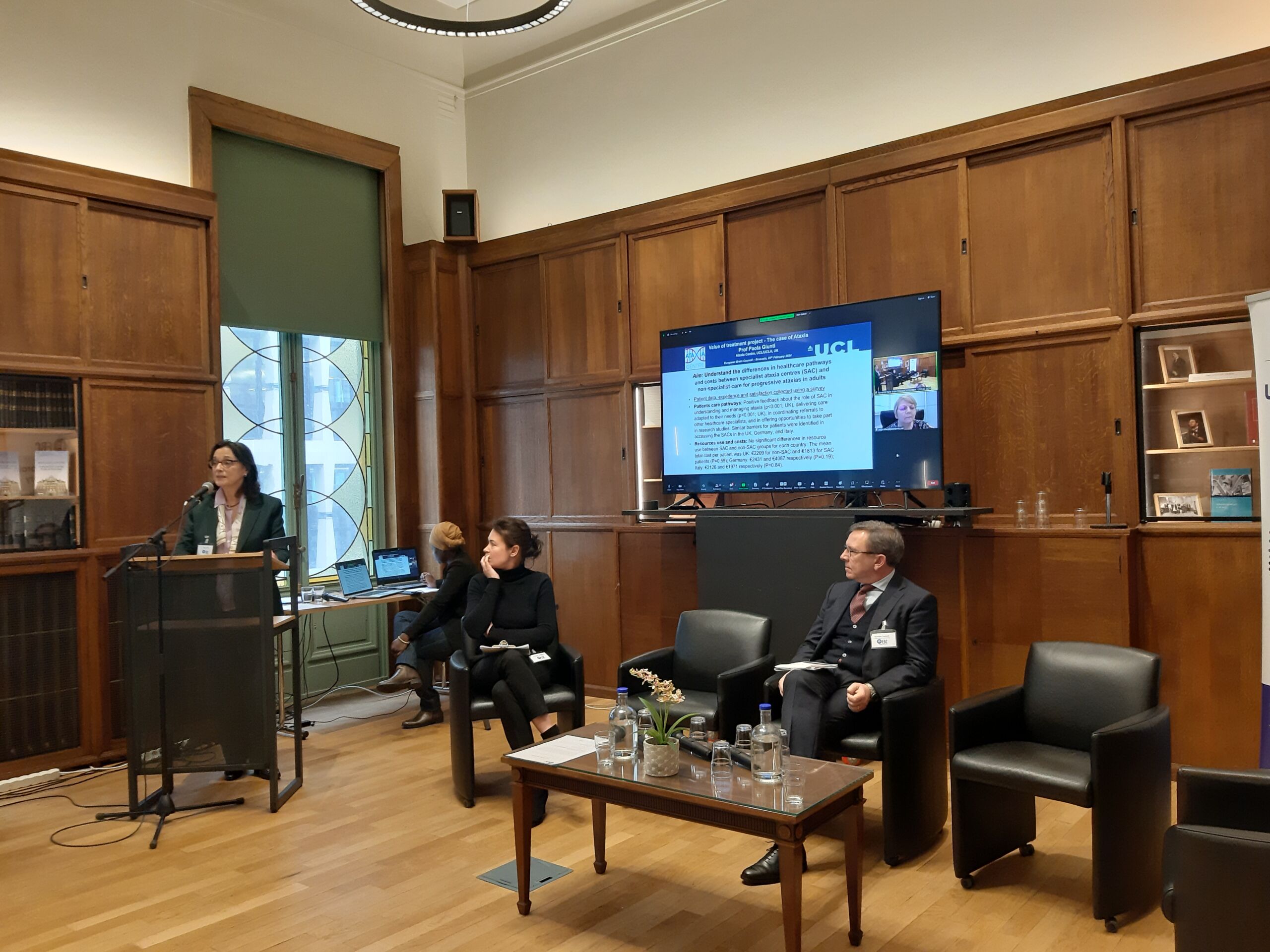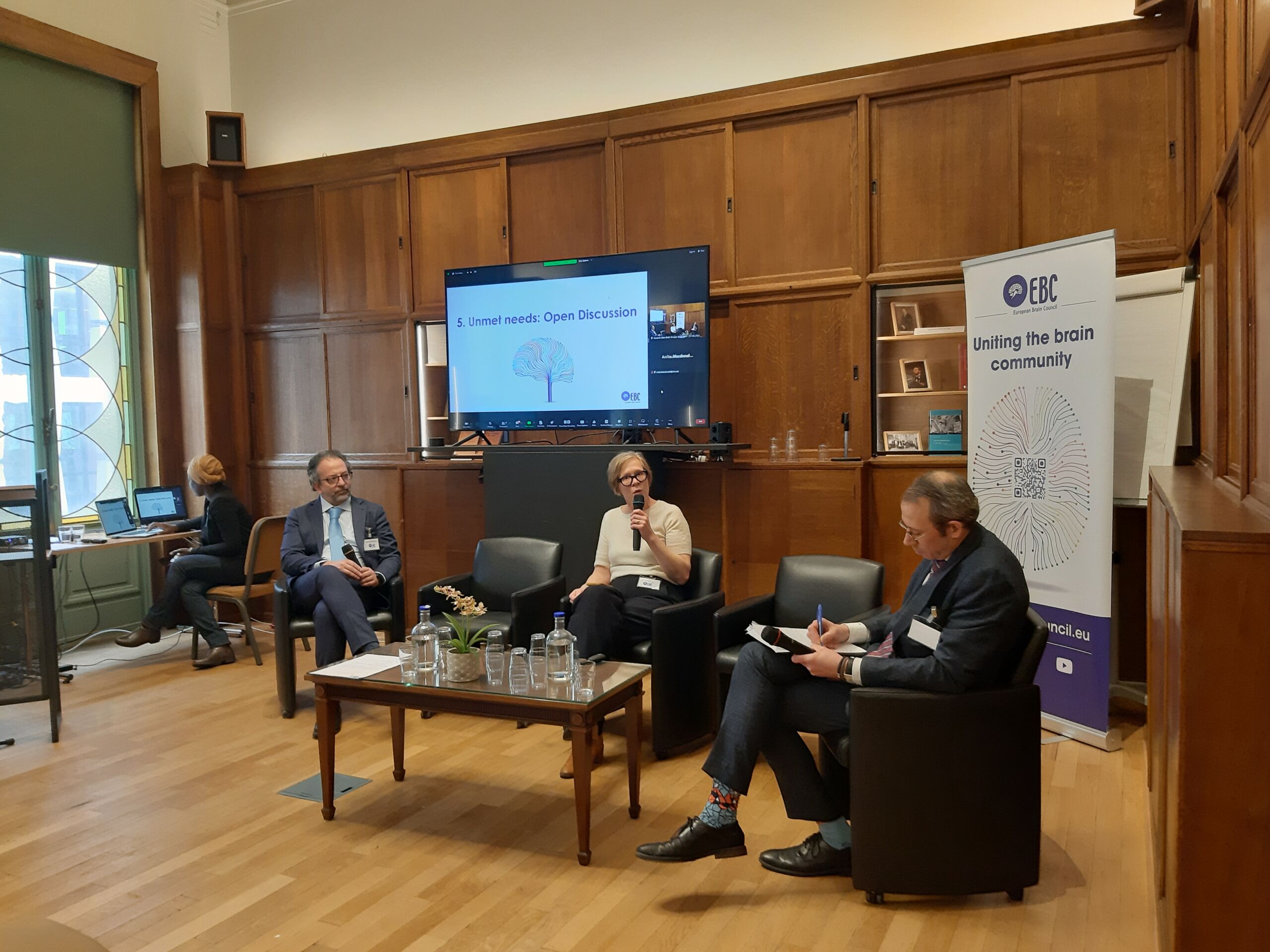On the occasion of Rare Disease Day, 29 February 2024, the European Brain Council (EBC) held the event Towards a Rare Brain Disease Ecosystem at the University Foundation, Brussels, to raise awareness on rare brain diseases and their societal impact. The event brought together researchers, clinicians, persons living with a rare brain disease and industry to address gaps and priorities in the field and brainstorm together on new ways to address them.
The morning kicked off with a welcome speech from EBC Executive Director, Frédéric Destrebecq, who stressed the need to join forces in a rare brain disease ecosystem and highlighted EBC work in the field – notably as a partner of the EU-funded BRAINTEASER project and as leader of the EBC/Partner-funded Value of Treatment initiative.
Frédéric Destrebecq then introduced the opening address from MEP Stelios Kympouropoulos (EPP, GR), a longtime supporter of EBC’s work. In his video message, MEP Kympouropoulos called for a renewed European action plan on rare diseases.
Magda Chlebus, Executive Director Scientific & Regulatory Affairs of the European Federation of Pharmaceutical Industries and Associations (EFPIA) closed the first session introducing the Rare Disease Moonshot – a successful example of public-private partnership aiming to accelerate research in rare diseases and its translation into new effective therapies. In her intervention, Magda Chlebus shed light on neurofibromatosis: with just one treatment, for just one type, on the market, the disease is the perfect example of how less fragmentation and more collaboration are highly needed to better leverage existing resources and fill gaps in the space.
The second session turned the focus to patient and caregiver priorities, with a personal testimony from Tim Buckinx, Founder & CEO of Epihunter, who lives with Evans syndrome and has a son with a rare epilepsy. In his contribution, Tim Buckinx stressed the emotional, social and financial dimensions surrounding rare diseases: the uncertainty of the future, the isolation of families, the need for mothers to stop working. Epihunter, which offers digital therapeutics for absence seizures in epilepsy, fulfils a wish of his son: “can you create a light that turns on when by brain switches off?”
Matt Bolz-Johnson, Patient Advocate at EURORDIS, drew attention to the impact of mental health conditions in rare diseases and called for more research in the field, more psychosocial programmes for people with a rare disease and more psychologically informed clinical care. Through its Mental Health and Wellbeing Partnership Network, EURORDIS aims to unite and empower the rare disease community affected by mental health problems – the network includes experts from 27 countries and is connected with 10 European Reference Networks.
Orla Galvin, Executive Director of the European Federation of Neurological Associations (EFNA), closed the session addressing rare neurology – a quarter of EFNA’s members being either dedicated to rare conditions or embedding rare neurology in their communities – and the efforts made to better meet patient needs. Through a Rare Neurology Charter, EFNA calls, notably, for more research funding and increased education in rare neurology as well as a multi-disciplinary approach and the recognition of the value of precision medicine and care.
Focused on industry innovation trends, the third session featured an intervention from Matthias Heck, Head of the EU Government Affairs & Strategic Alliance Development at Alexion Astra Zeneca Rare Disease, who raised awareness on NeuroMyelitis Optica Spectrum disorder (NMOSD) and Myasthenia Gravis (gMG) stressing the lack of good data. By supporting the EFNA Rare Neurology Charter, Alexion contributes to advocacy efforts for increased recognition of the burden surrounding rare brain diseases and policy changes.
Juan José Fernández Romero, Lead of Government Affairs EMEA at Amylyx Pharmaceuticals, drew attention to Amyotrophic Lateral Sclerosis (ALS) and its complexities, shedding light on the European ALS Coalition, which aims to collaborate with existing EU ALS organisations for the translation of the needs of people living with ALS through optimised diagnostic, matched care and better prognosis – notably, through the organisation of national roundtables.
Moderated by Vinciane Quoidbach, Research Project Manager at the European Brain Council, session four invited panelists to explore clinical care pathways for rare diseases in Europe, in discussion with Paola Giunti, Professor and Head of the Ataxia Centre at the Department of Clinical and Movement Neurosciences at University College London (UK) ; Anita MacDonald, Consultant Dietitian in Inherited Metabolic Disorders at Birmingham Children’s Hospital (UK); and Giuseppe Turchetti, Co-Founder of the Institute of Management at the Scuola Superiore Sant’Anna (IT).
Paola Giunti took the floor to outline the case of ataxia within the EBC Value of Treatment project, which aims to explore the differences in healthcare pathways and costs between specialist and non-specialist care for progressive ataxia in adults. The study also demonstrated the importance of receiving a specific diagnosis, knowing that for ataxia only, there are more than 100 genetic disorders.
Anita MacDonald addressed the challenges faced by people living with phenylketonuria (PKU) and the priority areas to focus on – notably care pathways, resources, treatment access, monitoring and co-morbidities. In terms of solutions, her toolbox includes patient and public involvement, shared care pathways, patient registries and lower drug costs.
Giuseppe Turchetti stressed the role of patient care pathways in the translation of European Reference Networks in national healthcare systems and the potential of digital tools in advancing the patient-doctor relationship. The Value of Education project, part of the Value of Treatment initiative, aims to investigate unmet needs in the use of digital tools and listen to the voice of patients and clinicians – notably by engaging patients associations. Results of a survey show the value of digital tools for an effective flow of information and communication between families and healthcare professionals.
The final session turned to unmet needs, with perspectives from Anna Jansen, Paediatric Neurologist and Board Member of the European Paediatric Neurology Society (EPNS) and Michelangelo Mancuso, Neurologist and Co-Chair of the Coordinating Panel on Rare Neurological Diseases of the European Academy of Neurology (EAN).
Anna Jansen called for more trainings on rare neurology across the lifespan and highlighted the need to integrate rare disease care in existing health systems as well as the need for holistic, comprehensive care of rare diseases. She also welcomed multistakeholder participatory research in the field, to make sure that priorities set in research are aligned with those of the community, especially in paediatric disciplines, where diseases are often chronic, such an approach is a potential game changer.
For Michelangelo Mancuso, transition is one of the goals to achieve. He also stressed inequities at both national and EU level – notably in terms of tests available and reimbursability, the huge need for newborn and prenatal screenings, and the importance of bringing key stakeholders together. On Rare Disease Day 2023, an editorial on key priorities to achieve in the next few years was released in the European Journal of Neurology.
After a fruitful open discussion engaging the audience, Frédéric Destrebecq brought the meeting to a close, highlighting the significance of the interventions held throughout the programme towards a rare brain disease ecosystem gathering brilliant ideas to translate into impactful projects.



